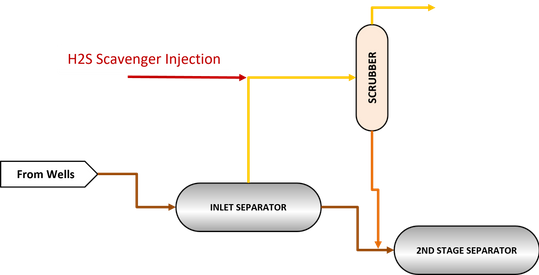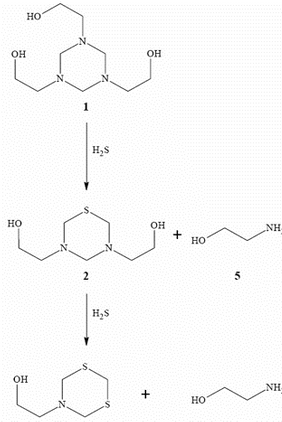H2S scavenger module
H2S scavenger
An H2S scavenger is used to remove H2S from the gas. There are two typical applications:
- Injection to a gas stream, very often gas from inlet separators (see figure). The scavenger will react with H2S in the gas. The spent scavenger is collected in a scrubber and drained down into the process, very often to 2nd stage separator.
- Injection of a multiphase scavenger at a wellhead or flowline. The scavenger will follow the well stream and react with H2S.
Traditionally, H2S scavengers have been amin-based molecules. One of the most common scavengers is triazine (in different versions), which is a molecule with 3 amine groups. In the resent years, a new scavenger, MBO, with two amine groups have become gradually more popular.
The H2S scavengers contain the amine groups because that gives them high pH. This helps to capture the H2S because H2S dissociates to HS- in a high-pH solution and this increases the reaction speed a lot.
The challenge is, that when the spent scavenger, which has a pH of about 10, is drained down into a separator, it can increase the pH of the produced water and this will increase the risk for formation of CaCO3, FeCO3 and FeS scale considerably.
With the H2S module in ScaleSim, a H2S scavenger (triazine, MBO or EDDM) can be added. The scavenger will react with H2S in the stream and remove it, and the change in pH and scale risk is calculated.
Note that the purpose of the H2S scavenger module is to calculate the effect of injecting scavenger on pH and scale risk. The module does not calculate reaction rate or efficiency. The user must specify the reaction efficiency and H2S is then removed according to the specified efficiency.



